When fiber artist and weaver Arturo Alonzo Sandoval says he utilizes repurposed materials in his art, know this is not your grandmother’s repurposing. Not pillows made from old quilts nor mosaics made from broken pottery, but the reuse – the redemption – of the detritus of modern industrial life. Incorporating miles of used microfilm, state fair ribbons, and vinyl images from a University of Kentucky construction wall, Sandoval makes art that “glorifies what man has created.â€
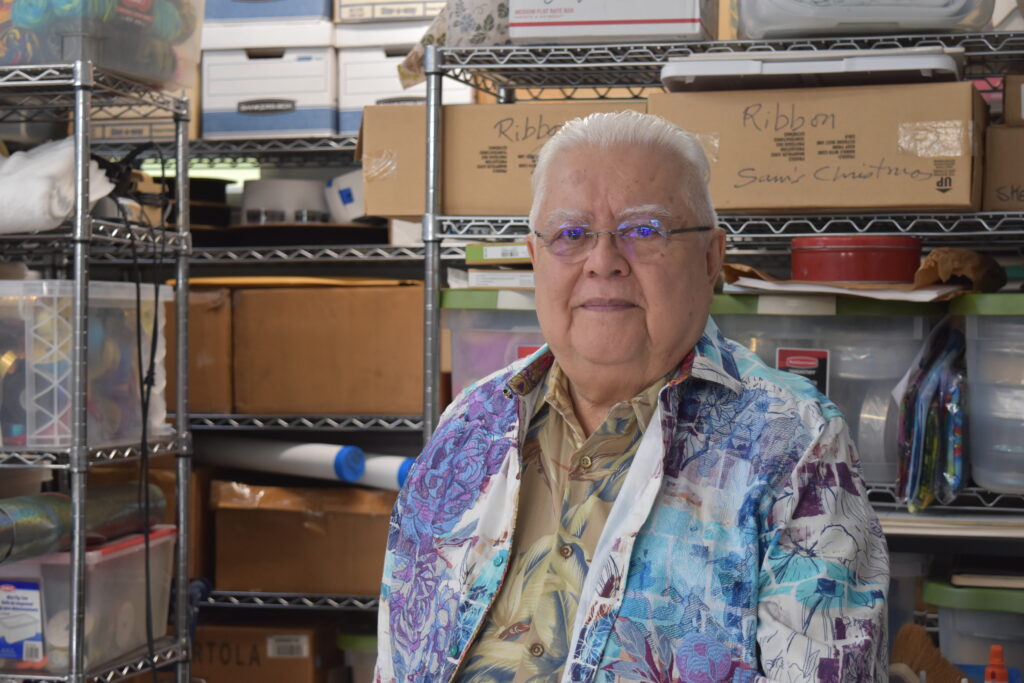
“My art is graphic, abstract, and sometimes representational,†Sandoval writes in his artist’s statement. “Every day I am awed by beauty and how it influences our world. My need is to somehow find magnificence in it and to create beauty from the residue of our culture.†The studio addition to Sandoval’s Lexington home stores the inevitable stash of that residue for an artist working in repurposed materials. The shelves of plastic totes and cardboard boxes hold battery cable, auto industry Mylar, laundry tag paper, and ribbons; he has also incorporated a bed frame, shredded money, AstroTurf, and UK campus newspapers into previous works.
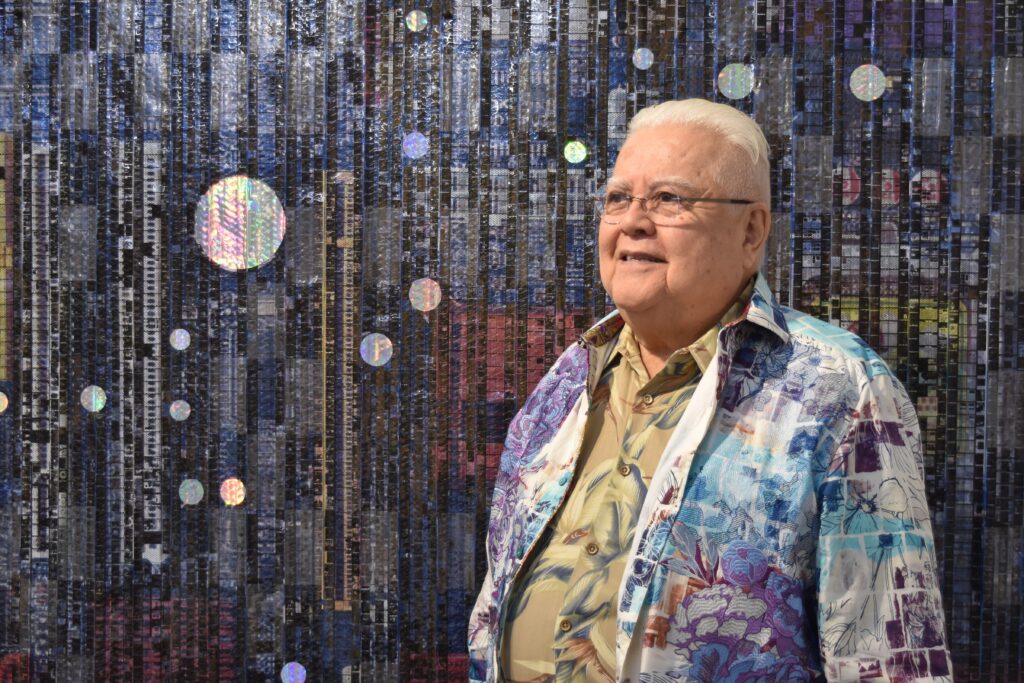
Alongside the rows of supplies are the tools of his trade. The Singer industrial sewing machine holds pride of place, stitching the threads that bind his interlaced modern art quilts together.
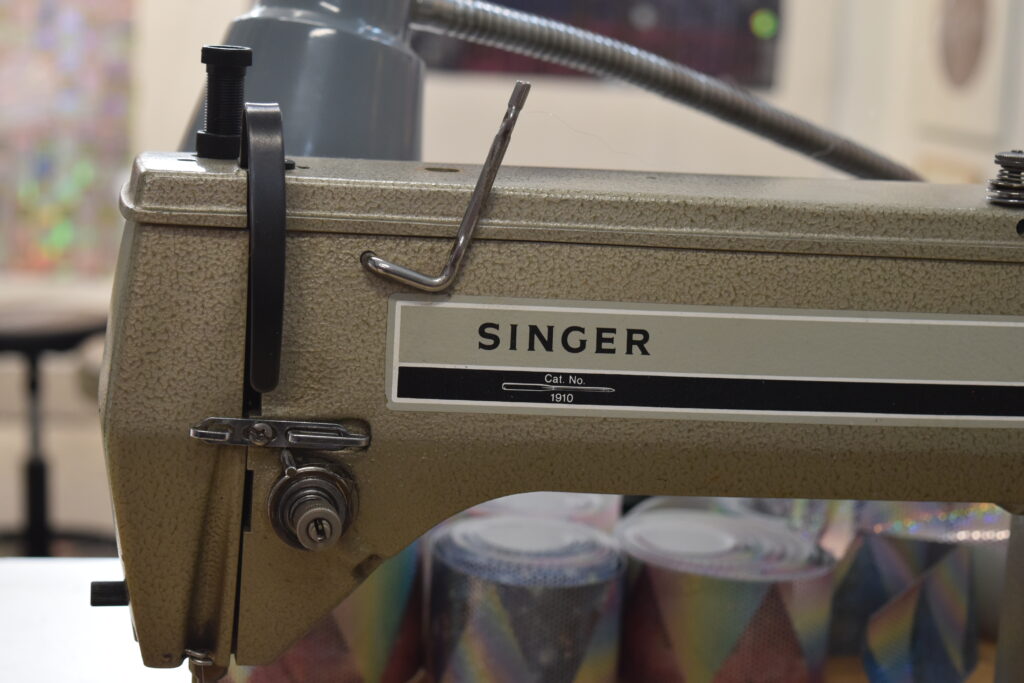
The studio walls are lined with a rotating selection of his 72†x 65†works-in-progress that interpret the seven creative spirits of God. Sandoval has created a collection of cosmic-themed works since 1986, inspired by the turn of the millennium, new images from the Hubble telescope, the Bible, and philosophies found in The Urantia Book. “It is like a myth or legend, and I like what it says,†he shares about the philosophy. “There is a human aspect of believability in it.â€
The seven creative spirits of God are based on Revelations 4:1-5, which speaks of a throne in heaven, surrounded by a rainbow, with seven flaming torches in front of it that represent the seven spirits. Through them, Sandoval reveals his own personal beliefs about constant creativity, permeating love, and God’s wisdom revealed through the galaxy.
He has titled the series Creative Portals, with individual works identified as Divine Love, Divine Light, Divine Power, Divine Wisdom, Divine Will, Divine Life, and Divine Order. Each has a large oval centerpiece with an appropriate space image from the Hubble: love is a reddish star array, power is a place where stars are formed, and light is a bright globular cluster. The colors of the planets and other celestial representations are also symbolic, his own intuitive sense of what “fits.â€
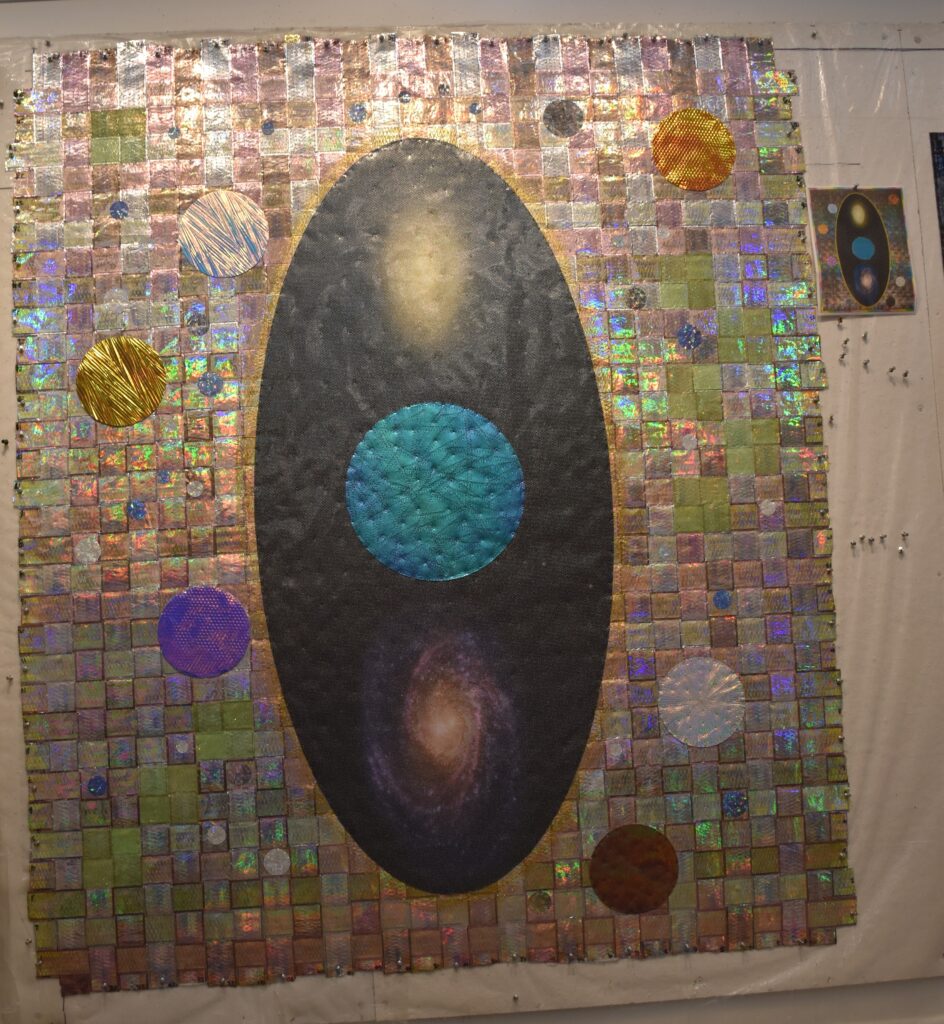
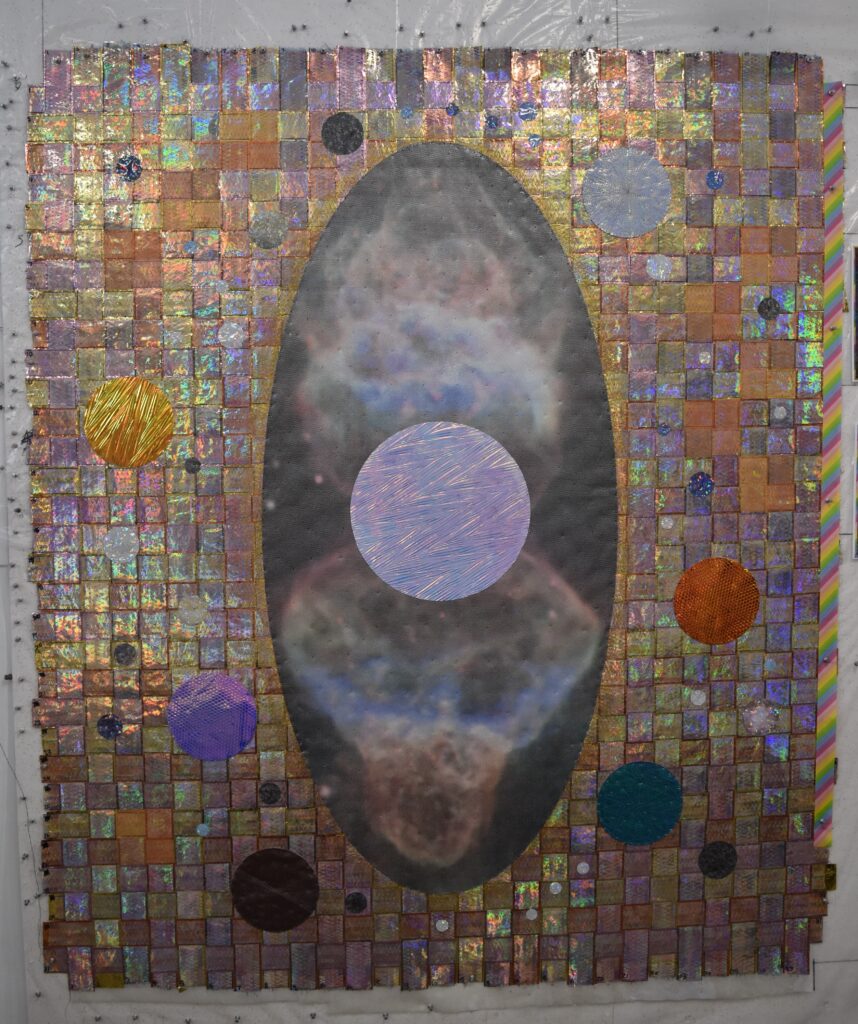
Sandoval composes these art quilts of at least seven layers of material. Mylar ribbon overlaid with holographic fabric and perforated vinyl creates the interlaced base, with a Pellon batting and fiber backing giving it stability and heft. He then embellishes each with various colors and weights of netting and appliques, images printed on perforated vinyl or colored metallic fabric.
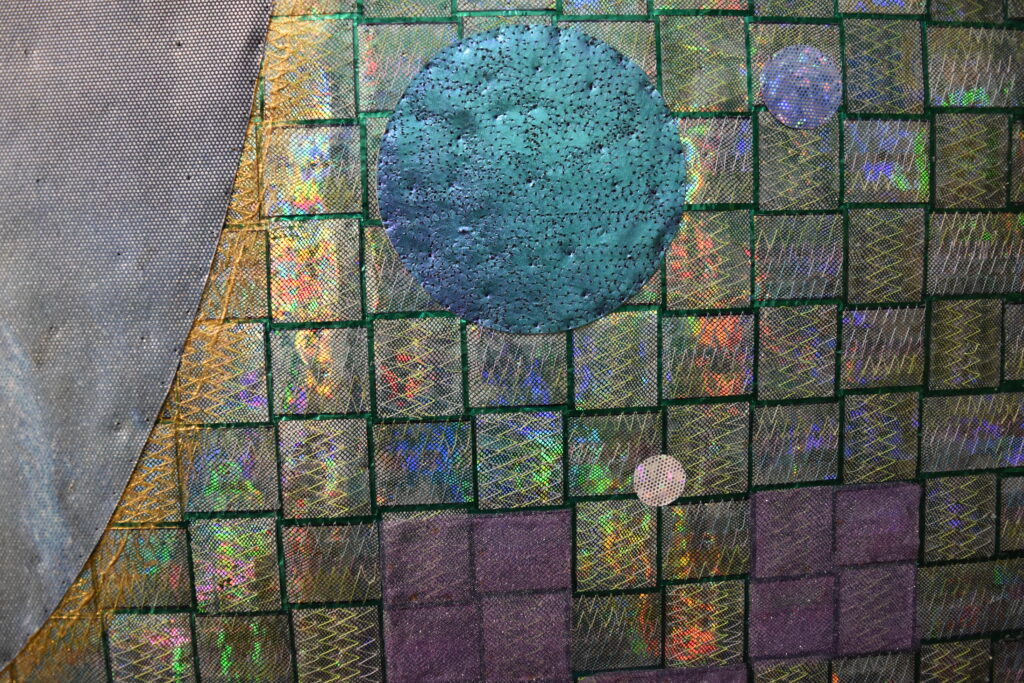
The Creative Portals will head to St. Louis for a solo show in 2023.
While earning his Master of Arts in 1965, Sandoval heard a voice saying, “weaving will be important to you.†He took it as prophetic. “I believed through faith and followed that voice,†he says. “I have incorporated weaving into my art ever since, whether in actuality or in illusion.†He later discovered weaving is deep in his lineage, traced back in his family tree for centuries.
Sandoval began on a loom but always pushed conventional boundaries. By 1969 he was creating minimal sculptures, crafted flat on the loom, that then opened up to three dimensions. While earning his MFA at Cranbrook Academy of Art in Michigan he moved to large-scale mixed media fiber art. Within a few years, his compositions migrated from the loom to the wall and evolved into machine-stitched interlaced art quilts.
An 18-wheeler brought his attention to repurposed materials. While at Cranbrook in 1970, the truck delivered a large batch of donated Mylar. Sandoval still has a couple of rolls from that first delivery. The Kentucky State Surplus Center is a more recent source, from where he gathered 3,000 pounds of materials like battery cable for himself and his students at the University of Kentucky. Repurposing has not just been a source of supplies, but also inspiration. “The materials dictated what I would do,†he says.
Most of Sandoval’s work is abstract and non-political. But his experiences as a Vietnam War veteran spurred him to create a controversial ongoing series. “I was traumatized while serving on the USS Kitty Hawk, when I would have breakfast with a pilot and they would be gone by lunch. It bothered me for 20 years and I held it all in.â€
In 1984, he finally talked about his pain. That release gave him permission to create a growing body of reimaged American flags in response to current events. His State of the Union No.2: The Mourning After, relates the pain and loss of the Vietnam War and is in the collection of the National Vietnam Veterans Museum. Other flags consider the threat of nuclear war, pervasive systemic racism, and the destruction caused by colonialism.
In 2020, he created another flag sequence called Know Their Names. It commemorates both unarmed Black people killed by police and officers killed in the line of duty. Crafted like the thin blue line flag, it was exhibited at the Lexington Living Arts and Sciences Black Lives Matter/Blue Lives Matter show.
The events of last year inspired another series, titled Confined Cities in the Age of COVID-19. Sandoval embellished maps from the 20 cities most infected by the virus, then overlaid a grid of microfilm that represents the strict confinement residents endured.
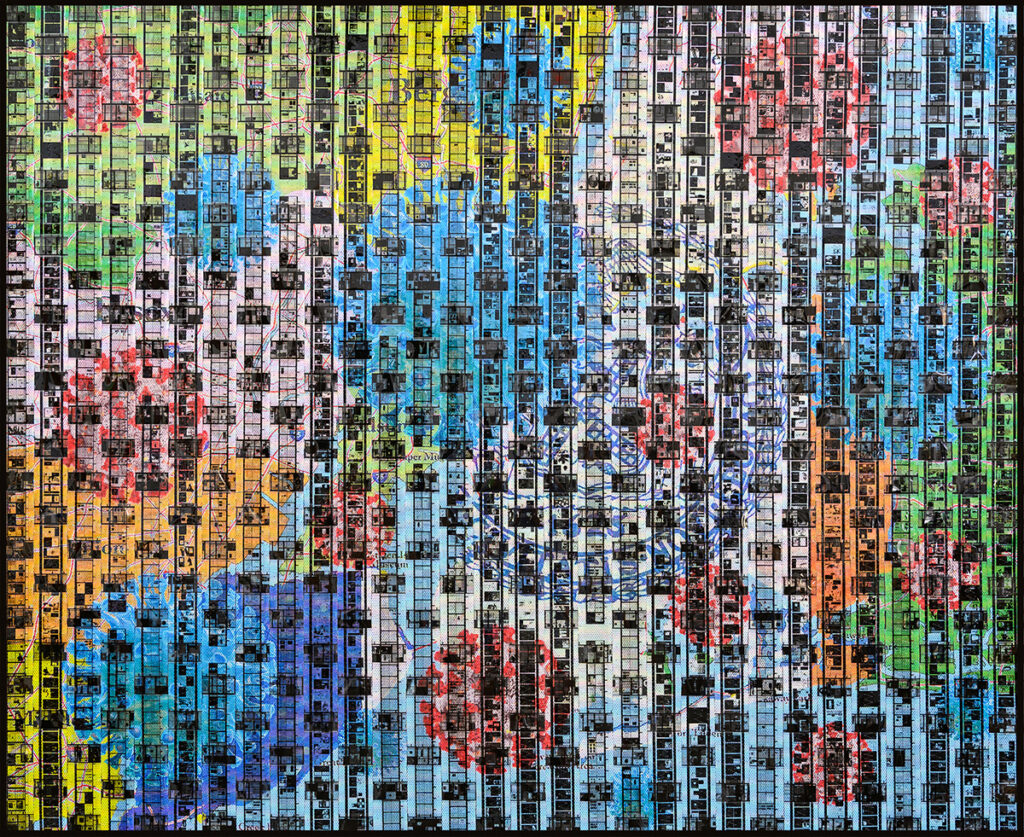
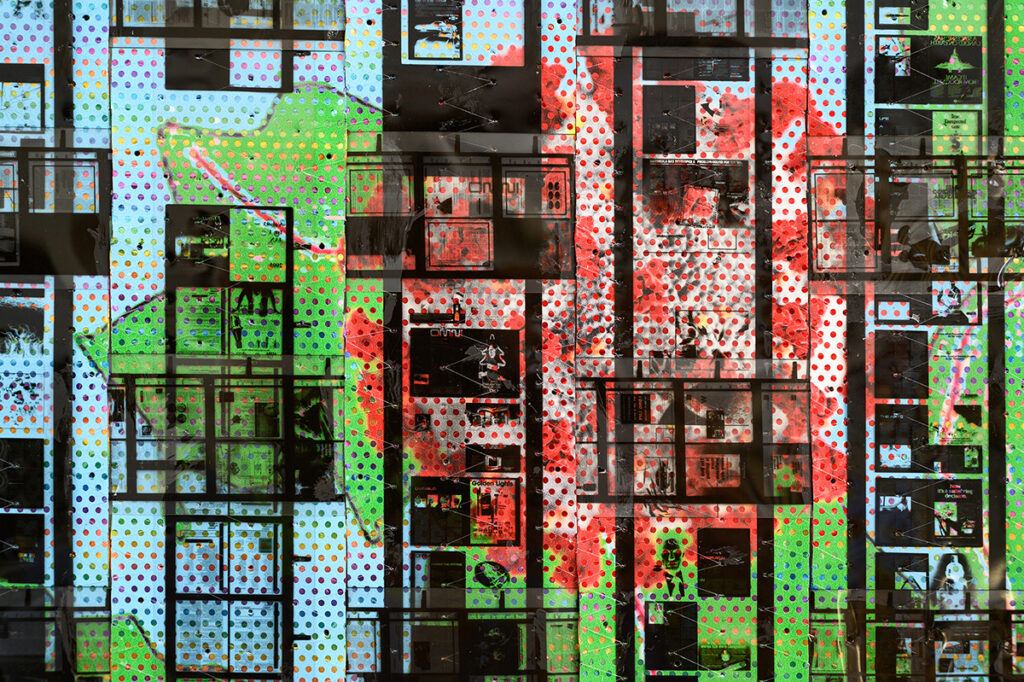
Since 1973, when Sandoval began a 44-year teaching career at the University of Kentucky, he has made his mark in the global art world from Lexington. Local connections and shows with the Lexington Art League, Living Arts and Science Center, and the Kentucky Guild of Artists and Craftsmen were a stepping stone to national exposure. In 1977 he made the leap to international artist when he was featured in the 8th International Biennial of Tapestry in Lausanne, Switzerland. His art has since been shown in Britain, Japan, and Poland.
But Sandoval is rooted in the Commonwealth, with a desire to connect with local Kentucky peers and support the community art scene. “I want to be a member, not a critic, and embrace the other artists,†he says. “I became friends with them, and they helped me get better at my own art.â€
Sandoval has created art for 55 years, yet continues to look towards what is next. Even as his studio is filled with his Creative Portals, he is developing ideas and plans for two new projects. One is Lexington’s Horse Mania public art project; his design is inspired by his interstellar works.
The other is Sandoval’s next series. He shared an image, a starting point, for new works that incorporate some of his established techniques. It will be more painterly and abstract, he says, and heavy netting on the surface will provide a stark graphic element in the composition. It is the next evolution of his work, a new portal into the creative vision of Lexington artist Arturo Alonzo Sandoval.
Photography by Kim Kobersmith.




